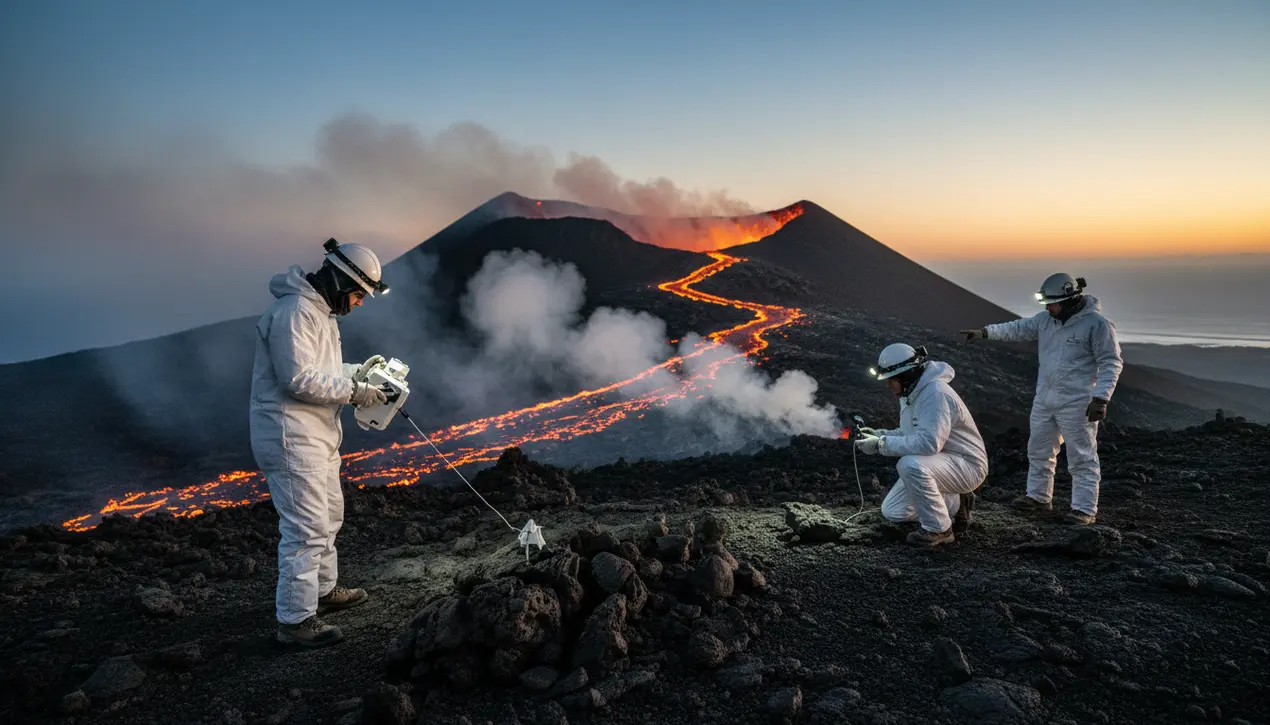
Scienceearth scienceVolcanology
The mystery of volcanoes that don’t explode finally has an answer
TH
Thomas Green
8 hours ago7 min read1 comments
For centuries, the fundamental question of why some volcanoes unleash cataclysmic, sky-darkening explosions while others produce relatively docile rivers of lava has remained one of geology's most compelling enigmas. The traditional textbook explanation was elegantly simple: as magma ascends from the planet's molten depths, the dramatic drop in pressure allows dissolved gases, primarily water vapor and carbon dioxide, to rapidly exsolve, forming billions of expanding bubbles.This is the classic recipe for a Plinian eruption, a violent, Vesuvian-style event where fragmenting magma and superheated gas are blasted into the stratosphere. But this model left a glaring gap, failing to explain the behavior of numerous volcanoes that, by all rights, should have exploded with devastating force given their volatile-rich magma, yet instead opted for a surprisingly gentle effusion.Now, a groundbreaking study has uncovered a long-missing piece of this volcanic puzzle, revealing that the physical forces acting on the magma itself—the sheer, grinding, kneading motion as it forces its way through a constricted volcanic conduit—can independently trigger bubble formation and fundamentally alter the eruption's destiny. This process of shear-induced bubble nucleation operates like a geological pressure cooker being shaken violently; the mechanical agitation itself encourages gas molecules to coalesce, creating the seeds for bubbles far earlier and under different pressure conditions than previously thought.Furthermore, this continuous shearing can forge interconnected pathways and escape channels within the magma, effectively allowing pent-up gases to bleed off gradually rather than building towards a single, shattering climax. This discovery is akin to finding a previously unknown regulator valve deep within the Earth's plumbing system.It provides a robust mechanistic explanation for the tame outpourings at volcanoes like Hawaii's Kīlauea, which often exhibits high gas content but predominantly effusive behavior, and could reshape hazard assessment models globally. By analyzing the microscopic textures of erupted rocks and conducting sophisticated laboratory experiments that simulate the immense shear stresses within a volcanic throat, researchers can now identify the tell-tale signatures of this process.This paradigm shift moves volcanology beyond a simple pressure-drop model to a more dynamic, fluid-mechanical understanding, where the very texture and flow history of the magma dictate its explosive potential. The implications are profound, not just for academic science but for the millions of people living in the shadow of active volcanoes. It suggests that monitoring ground deformation and gas emissions alone is insufficient; we may need to develop new techniques to sense the subterranean 'kneading' of magma, offering a more nuanced and potentially life-saving forecast of whether a restless mountain will roar or merely rumble.
#featured
#volcanoes
#magma
#gas bubbles
#shear forces
#lava flows
#geological research
Stay Informed. Act Smarter.
Get weekly highlights, major headlines, and expert insights — then put your knowledge to work in our live prediction markets.
Comments
Loading comments...
© 2025 Outpoll Service LTD. All rights reserved.